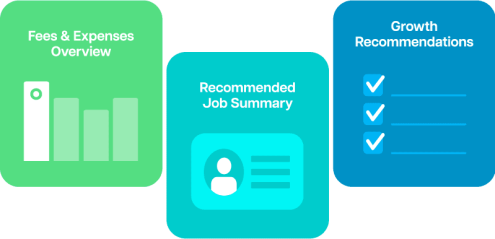Steering Through Storms: Leadership Strategies for Resilience in Uncertain Times
Intern Marketing
on
April 23, 2025
In today’s volatile business landscape, economic uncertainty is no longer a passing phase – it’s the new normal. For leaders across industries and organisational levels, resilience isn’t just a buzzword. It’s a vital capability. Executives and decision-makers who implement the right leadership strategies for resilience can shift their organisations from merely surviving to confidently thriving.
Understanding the Current Landscape
The global economy is confronting serious challenges. According to the International Monetary Fund (IMF), global growth slowed from 3.4% in 2022 to 2.9% in 2023. Inflation, geopolitical instability, and supply chain disruptions are all contributing to a more unpredictable operating environment.
These conditions demand more than traditional leadership. They require resilience — the ability to absorb shocks, adapt quickly, and continue delivering value.
Key Leadership Strategies for Resilience
1. Embrace Agility and Adaptability
In uncertain times, rigid plans often fall apart. Resilient leaders champion agility, empowering their teams to pivot as circumstances evolve. As Jeff Bezos said, “The only sustainable advantage you can have over others is agility.” Embed this mindset across all levels of your organisation.
2. Strengthen Financial Resilience
Cash flow is king in economic downturns. Leaders must focus on:
- Streamlining operational costs
- Scenario planning for various economic situations
- Optimising working capital
- Renegotiating supplier terms or exploring alternate revenue streams
Financial resilience builds a buffer that allows for proactive rather than reactive decision-making.
3. Invest in Innovation
Challenging times often spark the best ideas. McKinsey research found that companies maintaining innovation through the 2008 financial crisis outperformed peers by over 30% within five years. Innovation isn’t a luxury — it’s a necessity for long-term competitiveness.
Encourage creative thinking and empower teams to test new solutions, even in constrained conditions.
4. Prioritise Transparent Communication
Clear, consistent communication is critical when uncertainty looms. Leaders must engage openly with employees, customers, investors, and partners. Honesty builds trust, while confident messaging reinforces your organisation’s ability to steer through turbulence.
5. Foster a Resilient Organisational Culture
Resilience starts at the top and filters down. Leaders should cultivate a culture that values:
- Adaptability and agility
- Continuous learning
- Problem-solving and accountability
Promote psychological safety and recognise effort, not just results. When people feel supported, they’re more likely to persevere through tough times.

Leveraging Technology and Data for Resilience
Informed decisions are resilient decisions. Invest in tools and platforms that provide real-time visibility into operations and market shifts. Artificial intelligence (AI) and predictive analytics can highlight both risks and emerging opportunities before they become critical.
The Human Element: Employee Well-being
Leadership strategies for resilience must include a focus on people. Economic pressure can impact mental health and engagement, so leaders should:
- Conduct regular one-on-one check-ins
- Offer flexible working arrangements
- Provide upskilling and professional development
- Clarify organisational direction and individual contributions
Employees who feel valued and aligned are more motivated to weather uncertainty.
Looking Beyond the Horizon
While managing immediate risks, resilient leaders also maintain a long-term vision. Use this period to reassess and refine your strategic direction. As Warren Buffett famously advised, “Be greedy when others are fearful.” That means staying alert to growth opportunities even in difficult conditions.
Building Strategic Partnerships
Collaboration can be a game-changer. Strategic alliances help spread risk, unlock new markets, and provide complementary capabilities. Whether it’s co-developing products or sharing logistics networks, partnerships can multiply your resilience.
Encourage Cross-Functional Collaboration
Silos stifle resilience. Encourage departments to work together, share knowledge, and co-create solutions. Diverse perspectives lead to smarter decisions and more sustainable innovation.
Conclusion: Leading with Resilience in a Time of Change
Economic uncertainty calls for more than cautious leadership — it demands courageous, forward-thinking action. By focusing on the most effective leadership strategies for resilience, business leaders can navigate today’s challenges and prepare for tomorrow’s growth.
To thrive through volatility:
- Be agile and adaptable
- Invest in people and innovation
- Prioritise communication and culture
- Embrace technology and data
- Seek strategic partnerships
With these strategies, your organisation won’t just survive uncertain times — it will emerge stronger, smarter, and more resilient than ever.
About Staff Domain
At Staff Domain, we understand the challenges leaders face in navigating economic uncertainty. Our offshore staffing solutions provide flexibility and cost-efficiency, allowing businesses to maintain operational excellence while adapting to changing market conditions. By partnering with us, organizations can access global talent and scale their workforce strategically, positioning themselves for resilience and growth in any economic climate.









































